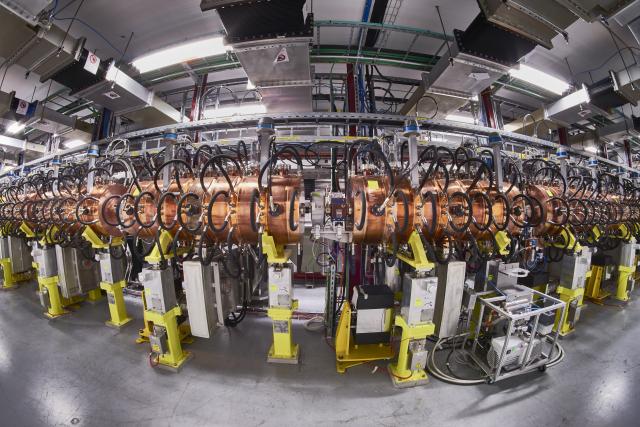At a ceremony held today on its main site in Meyrin, in the canton of Geneva, CERN inaugurated its new linear accelerator Linac 4. A linear accelerator is the first element of an accelerator chain, where particles are produced and receive the initial acceleration. Linac 4 will feed the CERN accelerator complex with particle beams of higher energy, which will allow the Large Hadron Collider (LHC) to reach higher luminosity by 2021.
The new 90-meter long machine sits 12 meters below the ground and took nearly 10 years to build. After an extensive testing phase, it will be connected to CERN’s accelerator complex during a technical shutdown planned for 2019-20. Linac 4 is part of a program designed to modernize CERN’s accelerator complex for the needs of the High-Luminosity LHC project.
Discovering new physics
The High-Luminosity LHC project aims to boost the performance of the LHC in order to increase the potential for discoveries after 2025. Thanks to the increase in the number of collisions and thus in the volume of data recorded by the experiments, the High-Luminosity LHC will provide researchers with more accurate measurements of fundamental particles than is the case today, as well as glimpses of rare processes that occur beyond the machine’s present sensitivity level.
“Linac 4 is a modern injector and the first key element of our ambitious upgrade program, leading up to the High-Luminosity LHC. This high-luminosity phase will considerably increase the potential of the LHC experiments for discovering new physics and measuring the properties of the Higgs particle in more detail,” said CERN Director General Fabiola Gianotti in a press release.







